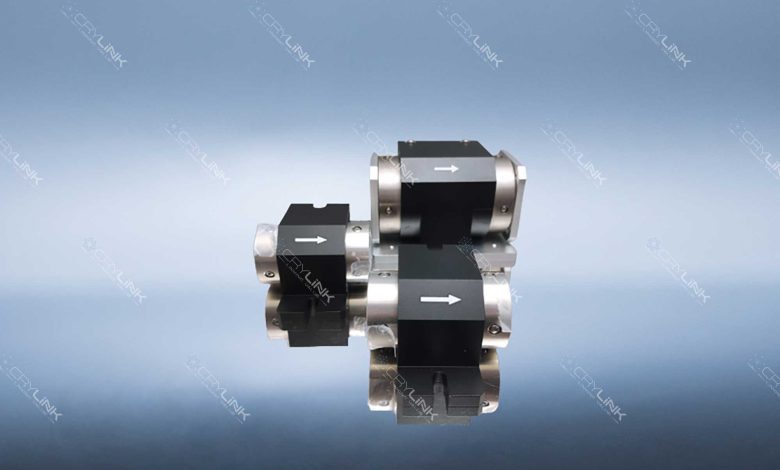Faraday Isolators: A Guide to Optimal Cleaning & Maintenance

Introduction
In the vast and intricate landscape of optical technology, Faraday isolators emerge as one of the most pivotal components, often serving as the unsung heroes in many advanced laser systems. These devices, with their unique design and specialized functionality, play a critical role in ensuring the stability and efficiency of the systems they are integrated into. Their primary function is to act as guardians, safeguarding laser cavities from the potentially harmful effects of back-reflected light. Such back-reflections, if unchecked, can not only compromise the performance of the laser but also lead to significant damages, resulting in costly repairs or replacements.
The magic behind the functionality of Faraday isolators lies in the Faraday effect. This phenomenon causes the polarization of light to undergo rotation as it passes through a magnetic field. This rotation, in essence, creates a unidirectional transmission path. The result is a system where light can freely pass in one designated direction, while any reflections attempting to move in the opposite direction are effectively blocked. This ensures that the laser system remains protected from any unwanted back-reflections, maintaining its efficiency and longevity. As we delve fatih eskort deeper into the nuances of Faraday isolators, we’ll uncover the importance of their maintenance and the role of professional services in ensuring their optimal performance.
The Crucial Role of Cleaning and Maintenance
For a Faraday isolator to function at its best, regular cleaning and maintenance are paramount. Over time, various contaminants like dust, fingerprints, oils, and residues can accumulate on the isolator’s surface. This not only hampers its transmission performance but can also lead to irreversible damage, compromising the overall efficiency of the laser system.
By adopting a routine cleaning regimen using appropriate solutions and tools, one can prevent these issues, ensuring the isolator’s longevity and optimal performance. Regular inspections and tests further help in early detection of potential problems, facilitating timely interventions.
Common Contaminants and Their Removal
Faraday isolators can be affected by a variety of contaminants:
- Dust and Debris: These can obscure the isolator’s surface, diminishing its efficiency.
- Fingerprints and Oils: Residues from human contact can degrade the isolator’s transmission performance.
- Laser Product Residues: Byproducts from laser processes can adhere to the isolator, potentially causing damage.
- Corrosion: Prolonged exposure to moisture can lead to rust and corrosion, inflicting permanent damage.
Each contaminant demands a specific cleaning approach:
- Dust and Debris: Use compressed air or a soft brush. For stubborn particles, specialized cleaning solutions might be required.
- Fingerprints and Oils: Clean with a cotton swab or fine brush dipped in solvents like ethanol or isopropyl alcohol.
- Laser Product Residues: Employ solvents that dissolve the specific laser materials. Persistent residues might benefit from ultrasonic cleaning or laser ablation.
- Corrosion: While corrosion can be irreversible, using passivation or anti-corrosion agents can mitigate further damage.
Step-by-Step Cleaning and Maintenance Guide
- Preparation: Before cleaning, ensure the laser is off and the isolator is disconnected. Let it cool to room temperature.
- Select Cleaning Agents: Choose cleaning solutions based on the contaminant type. Avoid abrasive substances that might harm the isolator.
- Cleaning Procedures: Adhere to the recommended cleaning techniques for each contaminant type.
- Post-Cleaning Inspection: After cleaning, inspect the isolator for any remaining contaminants or damage. Test its performance to ensure it’s operating at peak efficiency.
Maintenance Frequency Recommendations
The exact maintenance schedule can vary based on usage and environmental factors, but a general guideline includes:
- Daily: Clean the isolator’s exterior to remove dust and debris.
- Weekly: Conduct visual inspections for fingerprints, oils, or other contaminants.
- Monthly: Undertake a thorough cleaning and replace any worn-out components.
- Quarterly: Perform comprehensive inspections and tests to ensure optimal performance.
- Quarterly: Do normal examinations and examining quarterly to make sure performance as well as security.
Faraday isolators, pivotal components in many advanced optical systems, require consistent maintenance to ensure their optimal performance and longevity. Their intricate design and functionality make them susceptible to various contaminants, which can compromise their efficiency. Regular checks and maintenance become indispensable to ensure their seamless operation.
Quarterly Examinations: A Key to Performance and Safety
One of the foundational steps in maintaining a Faraday isolator’s efficiency is conducting regular examinations. A quarterly check-up is recommended to ensure both the performance and safety of the device. These periodic assessments can identify potential issues before they escalate, ensuring the isolator’s longevity and reducing the risk of costly repairs or replacements.
However, it’s essential to understand that while quarterly checks are recommended, the actual frequency might need adjustments based on the isolator’s usage and the environment it operates in. Factors like exposure to contaminants, operational hours, and specific environmental conditions can influence the maintenance schedule. Therefore, it’s crucial to develop a maintenance plan tailored to the unique conditions and requirements of your specific Faraday isolator.
The Undeniable Value of Professional Cleaning and Maintenance
Entrusting the maintenance of your Faraday isolator to professionals offers a plethora of benefits:
- Expertise and Experience: Professionals in the field come armed with extensive knowledge about Faraday isolators. Their experience allows them to identify, understand, and effectively deal with various contaminants that might affect the isolator’s performance. They also possess insights into the best practices to ensure the device’s optimal protection.
- Advanced Cleaning Techniques and Tools: The world of technology is ever-evolving, and professional maintenance services stay abreast with the latest advancements. They employ cutting-edge cleaning techniques and tools, ensuring thorough cleaning without causing any damage to the isolator.
- Efficiency and Time-saving: Engaging professional services means you can redirect your focus to other critical tasks. With experts handling the maintenance, you’re assured of efficient service, saving you both time and effort.
- Extending the Isolator’s Lifespan: Regular professional maintenance not only ensures the isolator’s optimal performance but also significantly extends its lifespan. This proactive approach can save substantial costs in the long run by reducing the need for frequent repairs or replacements.
In essence, professional cleaning and maintenance services offer a holistic solution, ensuring the isolator’s peak performance, longevity, and cost-efficiency.
Conclusion: The Path to Optimal Performance and Longevity
In the intricate world of optical systems, the significance of Faraday isolators is undeniable. These devices, with their sophisticated design and crucial functionality, stand as pillars ensuring the seamless operation of many advanced systems. However, like all sophisticated equipment, their efficiency and longevity are directly tied to the care they receive.
Regular maintenance isn’t just a routine procedure; it’s an investment into the heart of the system. By ensuring that these isolators are consistently checked, cleaned, and serviced, we not only bolster their performance but also extend their operational life. This proactive approach translates to fewer disruptions, reduced costs in repairs or replacements, and a more reliable system overall.
Furthermore, while individual maintenance efforts are commendable, the nuanced understanding and expertise brought in by professional services are unparalleled. They possess the knowledge, tools, and techniques that can address even the most intricate issues, ensuring that the isolator functions at its peak.
In essence, the longevity and optimal performance of Faraday isolators aren’t just a matter of their inherent design or quality but are significantly influenced by the regularity and quality of their maintenance. As we advance in the realm of optical technology, ensuring the health and efficiency of such pivotal devices becomes paramount. By prioritizing and investing in regular maintenance, especially with professional expertise, we pave the way for sustained excellence in our optical systems.






